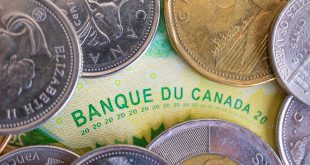The investors’ major focus point on Wednesday will be on the decision and press conference by the two-day Fed’s policy meeting, as financial markets expect the US central bank to press ahead with a rate hike and formally announce the launch of a much-anticipated balance sheet reduction.
The Federal Open Market Committee’s meeting will conclude on Wednesday amid remarks by Fed officials suggesting that the central bank is looking to take aggressive measures to relieve surging inflationary pressures.
The Fed’s key inflation gauge, the core PCE price index that the central bank relies on heavily in calibrating monetary policy, rose at an annual pace of 5.2 percent in March. That’s over twice as high as the Fed’s inflation target of around 2 percent. However, analysts previously said they don’t expect the core PCE inflation measure to drop below 4 percent this year.
Even if supply chains improve and geopolitical tensions ease a little, there is still doubt this inflation measure will be below 4 percent before early next year. Elevated inflationary pressures are certain to keep the Fed minded to tighten monetary policy swiftly in the coming months.
Expectations for policy tightening have been reinforced by Fed officials’ recent hawkish comments.
Fed chair Jerome Powell said in April that the central bank is “really committed” to bringing inflation back down to around 2 percent, arguing that it’s “appropriate in my view to be moving a little more quickly” along the path of tightening monetary settings. “I also think there is something in the idea of front-end loading … that points to the direction of 50 basis points being on the table” when the FOMC meets to vote on interest rates.
Traders have basically fully priced in a 50-basis point rate hike, with Fed funds futures contracts showing a 99 percent chance for a 0.5 percent rise, which would bring the target rate to between 0.75–1.00 percent.
An analysis for Seeking Alpha that the only debate among traders seems to be whether the Fed tightens monetary settings by raising rates by 0.5 percentage points or whether the 50-basis point hike will be accompanied by a heavy dose of quantitative tightening, or reducing asset purchases.
High inflation has led Fed officials to reinforce market expectations for an imminent commencement of quantitative tightening and that, when it does begin, would proceed at a faster pace than the prior period of balance sheet reduction.
All participants agreed that elevated inflation and tight labour market conditions warranted commencement of balance sheet runoff at a coming meeting, with a faster pace of decline in securities holdings than over the 2017–19 period.
Stagflationary concerns were fanned with the recent release of U.S. economic growth data, which showed GDP falling by 1.4 percent in annualized terms in the first quarter of this year.
Analysts generally expect a rebound in GDP in the second quarter, with many predicting that the lackluster first-quarter economic growth figures are unlikely to spur the Fed into a slower path of policy normalization.

 Noor Trends News, Technical Analysis, Educational Tools and Recommendations
Noor Trends News, Technical Analysis, Educational Tools and Recommendations




